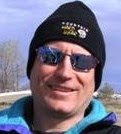The last legs from Texas to Louisiana was filled with new adventures over unknown territory and although quite challenging and very difficult at times, it was never the less a wonderfully rewarding experience.
Part 3. Cypress River, Texas to Gilliam, Louisiana
Sunday, June 13th, 2010
I had checked with Wayne to see if the towplane would be ready the weekend of June 5th and 6th. It wasn’t, and the weather was not cooperating either. They were under a Tornado Watch as I was speaking to him. I continued to check the weather as the next week wore on, and it was iffy. When I looked at Dr Jack’s Blipmap for Sunday, it looked favorable and I decided to give it a try. Friday after work I rounded up my trailer and parked it in front of the house. I loaded up everything except Alby before I went to bed. I work from 3:30 in the morning until 2 PM on Saturdays, so when I got home I grabbed Alby and hooked up the trailer. I was on the road to Louisiana shortly after 3:00. The fastest route had me traveling east across north Texas to Texarkana, Arkansas then south to Shreveport.
I made a couple of phone calls along the way, first to Wayne Crank Jr. in Shreveport, arranging to meet him at Gilliam the next day, then to Glenn and Liz Maynard to keep them posted on the latest developments regarding Alby’s Voyage. When I talked to Glenn, he and Liz were actually at The Lone Star Aerobatic Championships near Sherman, Texas where they were both competing. I passed by about 10 miles from the Grayson County Airport while I was talking to him, and was very tempted to detour there and give my support to their efforts. I still had nearly 200 miles to go before bedtime though, so had to keep on the road. By the way, Glenn took first place in his category, and Liz placed in the upper third in her advanced category, flying their Giles G-202. They wished Alby and me luck on completing this last leg out of Texas.
I checked into a motel on the north side of Shreveport around 8:30 and hit the sack. The next morning I grabbed a quick breakfast and drove the 25 miles north to Gilliam. Just as I was pulling into the Airport, I saw an Aeronca coming in to land. It was piloted by Shreveport Soaring’s Ralph Forrester and his passenger Doug Olson. They showed me where to park and then the three of us quickly put the Libelle together. Ralph is one of those guys that do anything and everything that needs to be done around the club. Today he would be our winch driver. Doug is a new member in their club and has had a couple of lessons so far. Doug’s day job is flying B-52 “Buffs” out of Barksdale AFB located at the east edge of Shreveport. It was still early and Ralph and Doug had some chores to do, so they took off to go get a lawn mower somewhere and I decided to drive over to have a look at Thackers airstrip some 8 miles from Gilliam as an Albatross flies. What I saw was dense trees, sloughs and creeks and no place to land once I got away from the Red River farmland about 3 or 4 miles out. Shortly after I got back to Gilliam Ralph and then Wayne arrived. There were also a couple of fellows waiting for the local Skydivers that operate out of Gilliam. I found out from Wayne that the club had conducted around 25 winch launches the day before, and several people had managed to climb out to cloudbase around 3000 agl. Today looked like it would be about the same. This encouraged me. While I was driving in the day before, I had ample time to think about the real possibility that today might turn out to be a series of winch launches followed by landings, or something worse (as far as Alby’s Voyage is concerned) such as a 8-10 mile flight with a landing at Thackers, Vivian, or even 28 miles away at Cypress River! I was eager to get started. The fellow that owns the airport came by and introduced himself: Mr. Danny Logan, a really nice Southern Gentleman, keeps his own 172 on this airstrip, and allows a crop-duster as well as the Skydivers and the Shreveport Soaring Club to operate here. Thank you Mr. Logan for letting Alby fly from your strip as well.
I had looked back through my logbooks a couple of days ago, and discovered that it had been over 15 years since my last winch launch or auto-tow. After talking it over with Wayne and Ralph, we all decided that it would be wise to do a couple of check rides in their 2 place Lark. Wayne got in the back seat and I in front. The first launch only netted 700 feet due to me starting the climb late. I was happy to note a couple of good bumps as I entered the pattern. The next climb was a little better, but only got about 850 feet. While we were hanging around for a minute or two, we ran into a thermal and climbed up to 1200 feet or so. Wayne suggested that we might as well stay up where it was cool for a while, but I was really eager to get back down to start the “Voyage”.
I was soon settled in the cockpit of my Libelle and Wayne was attaching the winch wire to the cg hook. My first launch resulted in 750 feet and I didn’t contact lift after release, so back on the ground for an immediate re-light. This time I got 900 feet and ran smack into the house thermal right after release. I steadily worked my way up as the wind drifted me north 2 or 3 miles. I was looking down on the paved drag strip located 1.5 miles from the airstrip. I had been warned by Wayne not to even think about landing here, because the drag strip is lined with lights and you can’t see some of them from the air. It looks just like a nice paved runway, even has a taxiway along the side. I couldn’t see any clouds within reach directly towards Cypress River, but there were some south and a bit west of Gilliam and more or less in the direction of Thackers, so I ran over to them. I was back down to 2000 or so when I got there. As I slowly climbed back up I was studying the location of clouds on course. There was pretty much nothing directly along the course line, but there were several around Thackers and a few west of there. When I topped out here I was at 3500 and so headed on to the next one. It was 6 or 7 miles out there and I was back at 2500 feet when I arrived. I wasn’t averaging much of a climb rate, but I wasn’t going to look a gift horse in the mouth. I was getting between 2 and 3 knots in the climbs.
Now I was located about half way between Thackers to the south and Vivian to the north and I was well away from the farm fields. I could look straight down and see swamp water amongst the trees. To the west there were no clouds, and the cloud I was milking gave out on me at 2900 feet. My inner voice was telling me it was time to move away from the trees, so I started back towards Gilliam. This was the right move and at the right time because I slowly but relentlessly sank toward the ground. I ran through a teeny thermal just before I got out of the swamp, but only managed to get back up to 2300. I could see that I was staying in a very safe position, and had it made back to Gilliam, but would soon be landing if I didn’t find something. It kept on until I was only half a mile from Gilliam and at 1100 feet. Literally at the last minute, I found the house thermal, and cranked my way back up to cloudbase, and yep, drifted back over Thunder Road again. The clouds were right about where I found them the first time, but had improved in the sense that the tops on some of them were building and a few had developed those good looking concave bases. In fact, by scouting around different spots under the cloud I was working, I found a sweet spot that gave me 4-5 knot lift and topped out at 4200.
Now I was ready to make a serious charge out west, and off I went. I ran out to a cloud that was about the same place where I quit the first venture, and got from 2600 back up to 3800. This afforded me the chance to go for a couple more clouds off to the southwest. My dilemma wasn’t an inability to get along the course; it was getting enough altitude and/or close enough together to be able to stay in the lift band. It’s one thing to be able to make it to a landing place, and quite another to arrive there with enough altitude left to hook up with some more lift. It accomplishes nothing if you land at a checkpoint along the way. After one more run to the next cloud, I was a couple of miles north of Cypress River and working some mediocre lift. The wind was blowing out of the south, so I was drifting farther away from the airport as I climbed. By the time I topped out I was at 3500 and was wasting more time than I was gaining. At least I had enough to run into the airport for the remote start, and I crossed the runway at 3000 feet.
After 2 ½ hours in the air, Alby was now officially on his way to Shreveport. There were neither clouds nor lift that I could find around Cypress, so off I went back north to the cloud I had come in from. It had moved quite a way farther north so it cost me 1000 feet to get there, only to find it had completely died while I was gone. All of a sudden the situation changed from good to bad. There was nowhere to go except for the safety of the runway back at Cypress River. I set a course straight for the airport, desperately scrutinizing the ground for anything that might make a thermal. About the time I had resigned myself to the fate of a forced landing at Cypress, I spotted a small area where the trees had been clear-cut around the top of a small hill. I veered my course off to the right, and just like the textbooks promise, there was the nicest little thermal you could ask for. I was only a mile from the runway, at 1100 feet above sea level and the terrain here is around 300 msl. Folks, that means that I was 800 feet above the ground. This was one of the best saves I have ever pulled off. I worked it for all I was worth, too! You can bet that I wasn’t going to blow this one. I had to go pretty steep to stay in it, but the higher I got, the better it got. This is what soaring is all about!
A cloud began to form above me, the lift had picked up to 3 knots (I thought this was excellent by the day's standard), I could see another cloud to the east that would be reachable and was right on course for home. Then I saw a rainbow between the next cloud and me. Cloud base was 4100 feet. I left it with a light heart, and a thank you on my lips. I tanked up again at the next cloud. It was one of those that have a multi-level base. The west side where I was working was higher than the rest of it, and lift was strong. I got to my highest point of the day at 4350. I was 22 ½ miles from Gilliam, and no worries about needing a bunch of reserve altitude, so I set a straight course for home. I was passing under the low part of the deck when all of a sudden it began to rain. Little beads of water formed all over the canopy then it started really raining with a big sheet of water running across us. I could see the ground by looking straight down and had pushed the speed up to 80 to get out of it as fast as possible. It didn’t take long and I soon broke out into the clear.
For a brief period I was sinking like a brick, as thousands of little spoilers formed all over the wings. They soon blew away and I was back running at best L/D. I wasn’t real sure that I was still high enough to make it now, but was confident that I could easily detour to Vivian or Thackers if needed. Now I could make out the white spot that is the bleachers at the drag strip, and from there I picked out the gap between two cornfields that is Gilliam’s runway. It was pretty low on the horizon, but I knew I was going to make it. I arrived a little too high for a straight in approach, but a little too low for a standard pattern. I veered off to the north, then back south, making a very large split-s approach, and touched down about half way up the runway. Wayne was the only one left at the airport. He greeted me with as big a grin as I had. We shook hands, and then I made the official presentation, turning Alby over to his next pilot. I can’t find the right words to tell you what a grand adventure this has been for me, but I can say that this has been the most rewarding series of flights I have done in many years. I believe that this is what Alby’s Voyage is all about.
With Wayne’s help we de-rigged and loaded the Libelle. I headed back home, and Alby went to spend his first night in Louisiana at Wayne’s house. I stopped in Texarkana for supper and gas and was at the house around 1 AM. I’m still grinning every time I think about my part in Alby’s Voyage!
View Flight on OLC
***********************
Part 2. Mineola to Cypress River, Texas
Monday, May 24th
Almost a month had gone by since Alby and I landed in Russell York’s pasture just outside of Mineola, Texas. The time had been spent repairing the landing gear and then when the ship was ready to go, waiting out the weather. Finally we were set to go. Getting a towplane to meet us at the Mineola Airport took some doing. First try was with the Shreveport Soaring Club 101 miles away. This was when I learned that their towplane was in the shop getting an engine overhaul. Next I checked out the Commercial operation at Midway Airport, 85 miles away. While this was viable, the cost was more than I had hoped for so we put this option aside as a reserve plan. After our home club, North Texas Soaring, (Captained by Jim Vickery) chipped in on the cost of using our tug, and after Tom Dowdy volunteered to take off work on Monday to ferry the Cessna Ag-wagon back and forth as well as do the tow at Minneola; and seeing as how we would not interrupt normal week-end club operations at Decatur, the plan was put into motion. Mineola is 130 miles from Decatur, and Tom lives a fair distance from the club, so he had to get up early in order to be on time for a noon launch.
Glenn and Liz Maynard were once again ready, willing, and able for crew duties. We repeated the rendezvous at the Denton Airport, switched vehicles, and headed out southeast to Mineola, Texas. We arrived around 11:00 and immediately set about rigging up the Libelle. It didn’t take long to get Alby and me ready to launch. Shortly after we finished up, Tom came sailing in about 2000 feet over the trees with our tug, and entered the pattern. From here on the countryside for about the first half is mostly trees with farm fields sprinkled along at irregular intervals. There are lots of ponds, or what is known in this part of the country as “Stock Tanks”. There are also two very large lakes, and eventually some big areas of swampland. I had carefully planned the route with checkpoints selected where landing strips were located. I had never flown over any of the territory east of Dallas, and because satellite photos show mostly unfriendly terrain, as far as I was concerned, I would consider land-out fields to be non-existent. By now, medium looking cumulous clouds were scattered about. It was time to hook up and go!
Take-off from Mineola
 Tom towed me into the wind out south of the airport and then looped around back over town to arrive on the west side of the runway at 3000 AGL, where I released. I headed for a cloud over town and connected with lift. I was disappointed to see that everything was rapidly drifting northward and so knew that my forward progress would require extra time. It was important from a safety point to stick to the planned route.
Tom towed me into the wind out south of the airport and then looped around back over town to arrive on the west side of the runway at 3000 AGL, where I released. I headed for a cloud over town and connected with lift. I was disappointed to see that everything was rapidly drifting northward and so knew that my forward progress would require extra time. It was important from a safety point to stick to the planned route.I pushed southeast toward my first checkpoint, a ranch strip named Rhodes. I also spent some time exploring the optimal lift zone to work and found it to be between 4000 and 5000 with average climbs of 4 knots. I was encouraged, and so set off to the east and the next checkpoint at Holly Lake. I made pretty good progress for a while, but bogged down when I got to the city of Gilmer. I could find lift around town under the clouds, but it was all very weak and was taking forever to climb back up.
I had a long hop to go to the next checkpoint of McKenzie, and it was located on the other side of a very large expanse of water, namely, Lake O’ The Pines. There would be no place to land along the way, and I needed to tank up large before heading out. Finally, by waiting it out mostly, and grinding away at it, I got into some decent lift and actually topped out close to 6000 feet. Now I was off and running and Alby was even talking to me again. I found 2 more decent clouds along the way and was topping out between 5800 and 6000 each time. I really was feeling optimistic, however I could see a pretty good-sized blue hole coming up.
I could see more clouds to the south, but they were too far away from my known landing strips for me to consider trying. It’s funny, (not) how quickly things can go from elation to that gut-gnawing sinking feeling. I was high enough to make it to the next checkpoint, but probably wouldn’t be able to do anything but land when I got there unless I could find some good lift along the way. My only choice was to press on and hope for the best.
You know, the odds of finding lift on a decent day like this are pretty good over a 15-mile glide. As I kept on going mile after mile I found nothing. I’m guessing that the blue hole was due to a mass of cool marine air from the lake. There was absolutely not a bump the whole way in. I veered off course each time I spotted anything close that might produce a thermal, but to no avail. I raised Liz on the radio and told her about the situation. She told me that they were already at Cypress River Airport and she spotted me coming in. After I got about a mile away from the airport, and was at 1800 feet, I turned around and ran over to the town of Jefferson, about 3 miles away to try to find me a thermal. I was able to scratch a little weak lift here and there and got up to about 2200 at one point, but it was a losing battle. So, once again I returned Alby to Texas when I landed at Cypress River.
I really loved this flight, up until the part where I had to land. We saw some beautiful and interesting country, experienced some good soaring for a while, and moved to within 15 miles of the Louisiana state line. I won’t bore you with the details of how Glenn and Liz (and Alby and me) took the glider apart, put it in the trailer, drove 200 miles back to Denton, etc. etc. etc. Alby arrived back in my study in Gainesville at 2:00 AM. I will tell you what he had to say about that later. We all had some really good pizza on the way home.
View Flight on OLC
 I checked with Wayne Crank Jr. at Shreveport Soaring to see how their towplane overhaul was progressing. He told me it wouldn’t be ready the weekend of May 29th, but possibly would be by the following weekend. I didn’t even bother checking the soaring forecast; I did chores and yard work instead. The next weekend I did check, and it was dismal. Strong winds, broken weak lift, and an absolute dead zone centered right on Cypress River. The towplane wasn’t ready yet, so it didn’t much matter. While talking to Wayne, he had mentioned that his club was using a winch to launch their gliders during the time the towplane was in the shop. He said that we might be able to trailer the winch over to Cypress River and get me launched for the final leg. I began to think of possible ways of doing the job. The problem with setting everything up at Cypress River was a matter of logistics. It would require a crew of people to drive there from Shreveport, conduct the operation, wait around to see if I could find lift, possibly would involve multiple tries to get started, and would take the only means of launching gliders away from Gilliam, effectively shutting down operations for the whole club for at least a day. I would also need someone to bring my pickup and trailer from Cypress River to Gilliam. Not the best plan, I reckoned. On the other hand, if I could launch from the existing winch set-up at Gilliam, it would not upset normal operations at all for the Shreveport club. Also, my trailer would already be waiting there for me when I finished the task. Wayne told me that launches at Gilliam would result in average climbs of 1000 to 1200 feet. That means that you just about need to be in a thermal when you release, obviously a landing is imminent if you don’t connect with one. Now you might well think that this would be a piece of cake. It should be and could be on a day when you have respectably high cloud-bases or tops of thermals. However, I am remembering that I had just completed two hops along the way, 85 miles and then 75 miles, and I had learned that cloud bases kept getting lower as I moved farther east through this particular country, and that the availability of safe out-landing sites decreases at about the same ratio. While neither of the previous 2 flights netted large distances, I feel good about them. I would stick to my plan of hopping along established landing strips while crossing unknown hostile terrain; it’s the safest way to do it.
I checked with Wayne Crank Jr. at Shreveport Soaring to see how their towplane overhaul was progressing. He told me it wouldn’t be ready the weekend of May 29th, but possibly would be by the following weekend. I didn’t even bother checking the soaring forecast; I did chores and yard work instead. The next weekend I did check, and it was dismal. Strong winds, broken weak lift, and an absolute dead zone centered right on Cypress River. The towplane wasn’t ready yet, so it didn’t much matter. While talking to Wayne, he had mentioned that his club was using a winch to launch their gliders during the time the towplane was in the shop. He said that we might be able to trailer the winch over to Cypress River and get me launched for the final leg. I began to think of possible ways of doing the job. The problem with setting everything up at Cypress River was a matter of logistics. It would require a crew of people to drive there from Shreveport, conduct the operation, wait around to see if I could find lift, possibly would involve multiple tries to get started, and would take the only means of launching gliders away from Gilliam, effectively shutting down operations for the whole club for at least a day. I would also need someone to bring my pickup and trailer from Cypress River to Gilliam. Not the best plan, I reckoned. On the other hand, if I could launch from the existing winch set-up at Gilliam, it would not upset normal operations at all for the Shreveport club. Also, my trailer would already be waiting there for me when I finished the task. Wayne told me that launches at Gilliam would result in average climbs of 1000 to 1200 feet. That means that you just about need to be in a thermal when you release, obviously a landing is imminent if you don’t connect with one. Now you might well think that this would be a piece of cake. It should be and could be on a day when you have respectably high cloud-bases or tops of thermals. However, I am remembering that I had just completed two hops along the way, 85 miles and then 75 miles, and I had learned that cloud bases kept getting lower as I moved farther east through this particular country, and that the availability of safe out-landing sites decreases at about the same ratio. While neither of the previous 2 flights netted large distances, I feel good about them. I would stick to my plan of hopping along established landing strips while crossing unknown hostile terrain; it’s the safest way to do it.So this would be the plan: winch launch from Gilliam, fly across the swamps and forests to the west side of the Cypress River, Texas Airport, make a remote start from there, then do the official Alby Flight back (across the swamps and forests) to the Shreveport Soaring Club at Gilliam, Louisiana. There would be only two possible landing spots along the way, and neither was directly on the shortest route between Gilliam and Cypress River. One is Thackers, a private airstrip 4 miles inside the Louisiana state line. The other is the Vivian, LA. Airport, 2 miles inside state line. It is 20 miles from Cypress R. to either of these fields.
***********************
Part 1. Midlothian to Mineola, Texas Sunday, April 25th, 2010
The Soaring forecast didn’t look that bad, but showed there would be strong winds. The fact that the winds were pretty much blowing from Midlothian straight towards Louisiana caught my attention and made me decide to give it a try. Unfortunately, Liz Maynard was down and out with a bronchial infection and Glenn was scheduled to fly a trip from DFW to Tokyo, so neither was available for crewing. I decided to press on anyway, and thought that I would not worry about how to get home until after I landed. It’s all a matter of priorities and number one on the top of my list was getting Alby moved (safely, but not necessarily conveniently) on down the road and as soon as possible. So I got up early Sunday morning and trailered the Libelle the 90 miles south to Midlothian.
I put the glider together and put Alby on his perch behind my head. We were all set to go except for one thing. The wind was blowing right across the runway with gusts over 20 knots. I waited a couple of hours, hoping things would improve, but they didn’t. Conditions were just not conducive to making a safe take-off. Finally, after 3:30 came and went, I scrubbed the attempt. I tied the Libelle down, parked the trailer out back of the hangers, and put Alby back in my truck. Alby was getting a little up tight by now (more about that later). After I got home I called Liz to keep her informed of the (non) developments, and was surprised when Glenn answered the phone. He had not taken the Tokyo flight after all, and I was pleasantly surprised to hear that he and Liz (ever faithful to the Alby Cause through sickness and health) would be available for crew duties for another try the next day.
Glenn Maynard and Dean
Monday, April 26th, 2010
 I left home at 7:30 and drove south 35 miles where I met up with Glenn and Liz at the Denton Airport close to where they live. We left my pickup there. We arrived at the Gliderport south of Midlothian a couple of hours later. We got the Libelle untied, readied, and Alby loaded onboard. We hooked my trailer up to Glenn’s truck and soon were all set to go, both in the air and on the ground. The winds were still fairly strong but had switched around from yesterday’s cross component to a more favorable direction for take off. Our towpilot had some morning appointments and so we didn’t get to take off as soon as we would have liked to. When he got ready and we were briefing each other about the tow, he informed me that the forecast didn’t look good at all, with a plus something thermal index. That turned out to not be accurate but alas, the part about it not being good was true. Undaunted, and casting all negative soaring thoughts behind us, we hooked up, took off, and soon were 3000 ft AGL and into the first thermal.
I left home at 7:30 and drove south 35 miles where I met up with Glenn and Liz at the Denton Airport close to where they live. We left my pickup there. We arrived at the Gliderport south of Midlothian a couple of hours later. We got the Libelle untied, readied, and Alby loaded onboard. We hooked my trailer up to Glenn’s truck and soon were all set to go, both in the air and on the ground. The winds were still fairly strong but had switched around from yesterday’s cross component to a more favorable direction for take off. Our towpilot had some morning appointments and so we didn’t get to take off as soon as we would have liked to. When he got ready and we were briefing each other about the tow, he informed me that the forecast didn’t look good at all, with a plus something thermal index. That turned out to not be accurate but alas, the part about it not being good was true. Undaunted, and casting all negative soaring thoughts behind us, we hooked up, took off, and soon were 3000 ft AGL and into the first thermal.The wind was a factor on getting started because as I was working under my first cloud, I drifted under the DFW class B airspace and had to watch that I didn’t get above 4000 ft. As it turned out, I didn’t need to worry much about it because the thermals were not going above that anyway. I cloud hopped my way around to the east and north, passing south of Midway and then Lancaster Airports imbedded in the Dallas Metroplex. Now I was clear of the Class B and struck out on course for Louisiana.
The first part of this flight was comfortable enough because after leaving the city there were a lot of farm fields along the way, plus several landing strips, which were major checkpoints along the planned route. It was slow going though. There was a temperature inversion sitting at about 4000 feet putting a lid on the tops of the thermals. You could see heavy haze in most any direction and the cu’s appeared to dissolve into the stuff beyond about 10 miles. There also was still a pretty good crosswind blowing south to north. The good news was that I kept finding useable lift marked by small low cu’s just about anytime I needed them. The disappearing cu’s were just an illusionary effect of the haze, because new ones kept coming into view out of the murk as I trudged along. I never did get very high, the lift was running between 2-3 knots, occasionally 4, and was topping out between 2700 and 3200. My high for the day was 4200 and that was only once. Three times I got down to 1200 ft but each time I ran into the needed thermal and scratched my way back up.
I had passed my checkpoints of Harper, Eisenbeck, Erco, and Goode. I crossed over Interstate 20 shortly after passing ND Ranch and this is about where I begun to run out of farmland and into the beginnings of the east Texas forests. Right about here is also where I noticed funny things happening with my electrical system. My audio vario was giving me different tones than I was used to; one of my varios quit all together and my data logger also gave up. I finally woke up to the fact that system battery voltage was down around 5 volts. (I discovered later that the battery had developed a short in one cell). I shut down everything except one vario and this worked ok for the rest of the flight. I now had no radio contact with Glenn and Liz as well.
I continued to work my way eastward using the clouds and was now over some mostly wooded terrain with a few low hills. Ground elevation here is around 500 feet above sea level and I had been seeing 2800-3000 feet on the altimeter for the last few climbs. The thermals were getting weaker also, averaging 2 knots. I finally came to the end of the trail when I got low over a timbered area with a few fields scattered around. I was still a few miles from the next checkpoint, and was only a tad over 6 miles southeast of the Mineola Airport, but couldn’t reach either. I picked out a good field, flew a pattern around it twice while still hopefully searching for lift. I actually got my teeth into a bit of lift and circled in and out of it for a while but it was too little too late. I made the decision and switched my focus to the job of landing.
My field was located at the junction of two county roads that wander through the woodlands, and was close to a tall narrow cylinder painted light green which I assume is a water tower and would prove to be a visual aid for Glenn and Liz to find me. The field had some low terracing which followed the contour of the slope it ran through. I could see a few houses scattered along the roads. I set up a right hand pattern and turned final over the tops of some trees. Everything went as planned with a normal approach and touchdown.
As I was rolling out and slowing nicely, my left wingtip caught a tussock of grass on the uphill side and swerved me to the left. In doing so, it put an abnormal side load on the main gear and actually popped the wheel out of the strut, as well as bending the A-frame pieces. I coasted to a stop in the grass with no other damage to the ship and none to me. To add insult to injury though, Alby chose this exact moment to tell me what he thought about the whole day. I will defer further description of the conversation, but promise to tell you about it later.
After removing the canopy and climbing out of the ship, I activated the message button on Glenn’s SPOT device. He had loaned it to me and explained that he had a pre-recorded message set up which would call his cell phone and report the coordinates of my present position automatically. I also checked the Alby SPOT device and saw that it was still functioning normally with both LED’s blinking properly. I then called Liz on my cell phone and found out that in spite of no radio contact, they had been following the Alby SPOT signals via Glenn’s I-phone screen and so were less than five miles from me and were on their way. Modern technology is truly wonderful, I thought.
I remember many occasions in my early years of cross-country attempts when I walked from my landing spot to some ranch house and used their telephone to call home, then waited hours, sometimes into the middle of the night for someone to come fetch me. In the mean time, I set about trying to find a gate that would allow access into the field. There was a house across the road, and while I was walking the fence line, a fellow strolled over and struck up a conversation. He hadn’t noticed the sailplane sitting in the field and said he thought I was inspecting the fence or something. I explained what was going on, and told him my friends would soon be there with the trailer. He said that he wasn’t the owner of the land, but knew Russell York, the man that was leasing it. In fact, he dialed Russell’s number on his cell phone then handed it to me.
 I introduced myself and explained the reason for the phone call. He began to give me directions on how we could get into the field, but then decided it would be easier to just come on over and show us. A few minutes later, I saw Glenn and Liz arrive and shortly thereafter Russell York and a friend of his, Markeith Buckner showed up. Before long the whole convoy had come in through a neighbor’s pasture and a back gate into this field and pulled up to where the Libelle was resting. After introductions were made, we spent some time telling Russell and Markeith all about sailplanes, soaring, cross-country flying in general, and Alby’s Voyage in particular. They were fascinated with the whole project and we gave them information on how to check the past and future progress of Alby on the website. We also told them to be sure and look for this story to be posted because they were going to be included in it. Meeting helpful and friendly people like Russell and Markeith is one of the greatest parts of this whole adventure. Thanks again guys, for all of your help and hospitality!
I introduced myself and explained the reason for the phone call. He began to give me directions on how we could get into the field, but then decided it would be easier to just come on over and show us. A few minutes later, I saw Glenn and Liz arrive and shortly thereafter Russell York and a friend of his, Markeith Buckner showed up. Before long the whole convoy had come in through a neighbor’s pasture and a back gate into this field and pulled up to where the Libelle was resting. After introductions were made, we spent some time telling Russell and Markeith all about sailplanes, soaring, cross-country flying in general, and Alby’s Voyage in particular. They were fascinated with the whole project and we gave them information on how to check the past and future progress of Alby on the website. We also told them to be sure and look for this story to be posted because they were going to be included in it. Meeting helpful and friendly people like Russell and Markeith is one of the greatest parts of this whole adventure. Thanks again guys, for all of your help and hospitality!Because of the lack of main wheel, we had to use a modified procedure to de-rig the ship. With the help of our new friends we wrestled first one wing then the other off and into the trailer. Then we all lifted the fuselage up and onto its’ cradle. It didn’t take long at all and we had everything secure and ready for the trip back home. We made it back to the Denton Airport around midnight and swapped the trailer from Glenn’s rig to mine. Alby and I were back at my house in Gainesville about an hour later.
***********************
Special thanks to Dean, Elizabeth, Glenn and Tom for their extraordinary contributions to these flights. Ed.




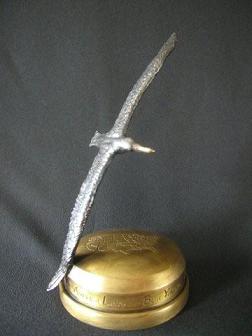
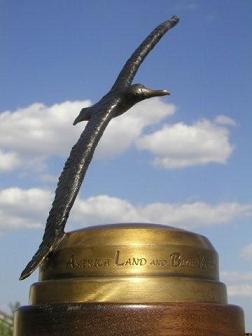


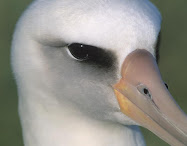
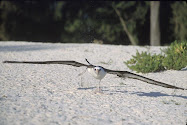


.jpg)
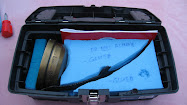.jpg)
.jpg)
.jpg)
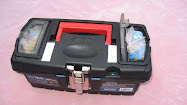.jpg)
.jpg)

.jpg)
.jpg)
.jpg)
.jpg)
.jpg)
.jpg)
.jpg)

.jpg)




